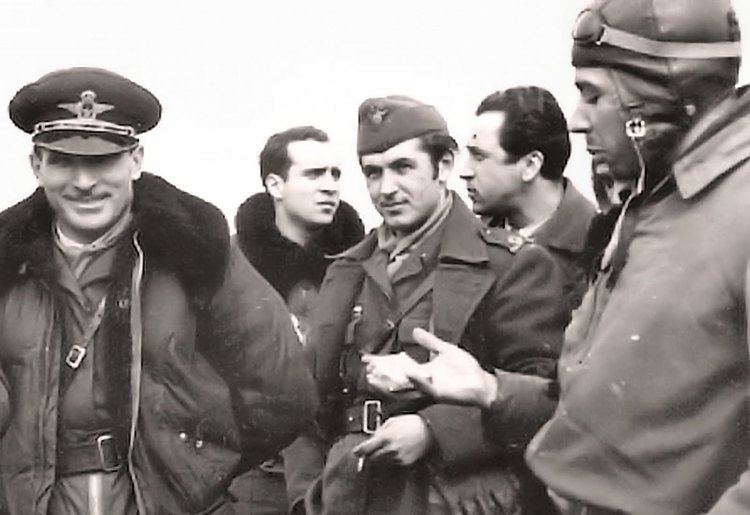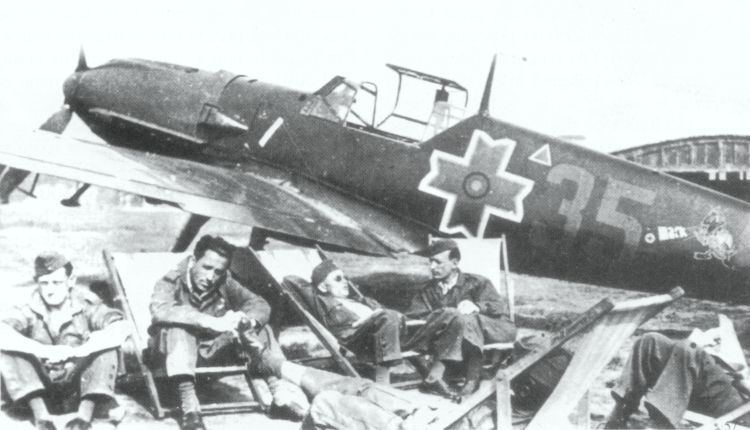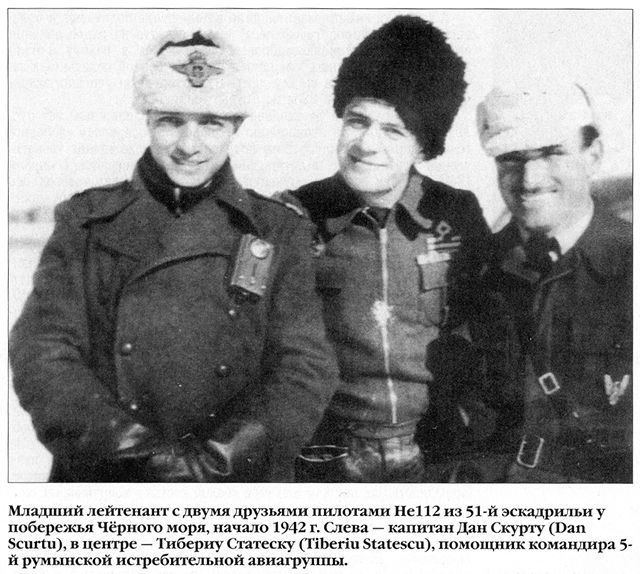Nickname(s) Alecu | Rank Captain Name Alexandru Serbanescu | |
 | ||
Died 18 August 1944(1944-08-18) (aged 32)Rusavat, Buzau County Years of service 1933-1942 (Army)1942-1944 (Air Force) | ||
Alexandru serbanescu
Alexandru "Alecu" Şerbănescu (17 May 1912 in Coloneşti, Olt County – 18 August 1944 in Ruşavăţ, Buzău County) was a leading Romanian fighter pilot and flying ace in World War II. In the spring of 1942 he was assigned as a pilot to the 7th Fighter Group, which fought with the German forces against the Soviet Union on the Eastern Front, including Stalingrad. He flew mostly IAR-80 and Messerchmitt Bf-109 fighters.
Contents
- Alexandru serbanescu
- In memory of Cpt Alexandru Serbanescu
- Early military career
- Eastern front
- Back to Romania
- Death
- Legacy
- References
In memory of Cpt. Alexandru Serbanescu
Early military career

He graduated from the Military College at Târgovişte and the Infantry Officers School at Sibiu in 1933 and was soon appointed the commander of the 3rd Mountain Troops battalion, located at Braşov. In 1942, he joined the Air Force Flight School in Ghimbav and became soon a fighter pilot within the 7th Fighter Group.
Eastern front

The 7th Fighter Group was detached in 1942 to the Stalingrad front. Şerbănescu distinguished himself in the fierce battles during the retreat from the airfields around Stalingrad. When Soviets broke the German and Romanian defenses in November 1942 and approached the Romanian airfield where the 7th Fighter Group was stationed, Şerbănescu successfully organized the defense of the airbase against the Allied forces, helped by his infantry experience. He had at his disposal only two anti-aircraft guns (one Rheinmetall 37mm and one 75mm Vickers-Reşiţa gun), the 20mm guns on the Bf-109Es and a company of ill-equipped and trained soldiers. The Romanians' camouflaged positions and well-led defense stopped the Soviet tanks attacking the airfield for two days. The Bf 109's 20 mm guns were used as antitank weapons on the ground (by lifting the airplane's tail on barrels), this being a unique case of airplane-tank duel. On November 23, 1942 the Romanians evacuated eight Bf-109E (another 3 were lost while they tried to take off under fire). Each airplane carried two or three people in the cockpit. After this, what remained of Şerbănescu's unit was stationed on the Morozovskaya airfield and was soon withdrawn to Romania for rest and recuperation.
Back to Romania

On March 29, 1943, Şerbănescu was appointed commander of the 57th Fighter Squadron, equipped with the new Messerschmitt Bf-109G, and promoted to the rank of Captain. Between June and August 1943 he shot down 28 Allied aircraft, and received the highest Romanian military decoration, Order of Michael the Brave, 3rd Class. On October 23, the 9th Fighter Group replaced the battle-exhausted 7th Fighter Group, but Şerbănescu and the other aces remained. He kept fighting and shooting down airplanes of the Allies and, as a result, he was named the Group's commander on February 13, 1944. In May 1944 the Red Army entered Romania and occupied northern Bessarabia and northern Moldavia, but they were stopped after some fierce fighting (see also: Battle of Târgul Frumos), in which the pilots also played a very important role. On June 11, Şerbănescu shot down his first USAAF aircraft, a B-17 Flying Fortress, his 45th victory. This was followed by two Allied P-51 Mustangs shot down on July 31 and on August 4 respectively, which were his last kills.
Death

On August 18, 1944, Alexandru Şerbănescu took off on his last mission. On that day, he and his twelve wingmen, together with twelve other fighters from the 9th Fighter Group, attacked a swarm of Mustangs and Lightnings. When Lieutenant Dobran and Adjutant Dârjan tried to clear his tail, it was too late. His last words were: "My boys, I'm going down...". Apparently his radio wasn't functioning properly and he could not hear his wingmen's warnings. Following Şerbănescu's death, all Romanian fighters were issued orders to refrain from engaging the Americans until a new strategy would be adopted. Five days later, on August 23, 1944, a coup d'état led by King Michael of Romania deposed Marshal Ion Antonescu and Romania switched to the Allied side.
During his entire piloting career, he was credited with 47 confirmed victories (and 8 probable) in aerial combat which, with eight unconfirmed, yielded 55 points in the Romanian scoring system, second only to Constantin Cantacuzino with 69.
Legacy
Today, a boulevard in Bucharest bears his name and passes very close to Aurel Vlaicu Airport. Each year, on 18 August, veterans, air force officers and aviation enthusiasts gather at his tomb to commemorate him. On August 18, 2004, the 30th Honor Guard Regiment commemorated, with military honors, the sixty years that had passed since Capt. Şerbănescu was killed in action.
On December 1, 2006, the 95th Air Base of the Romanian Air Force received the honorific title Cpt. Av. Alexandru Şerbănescu.
